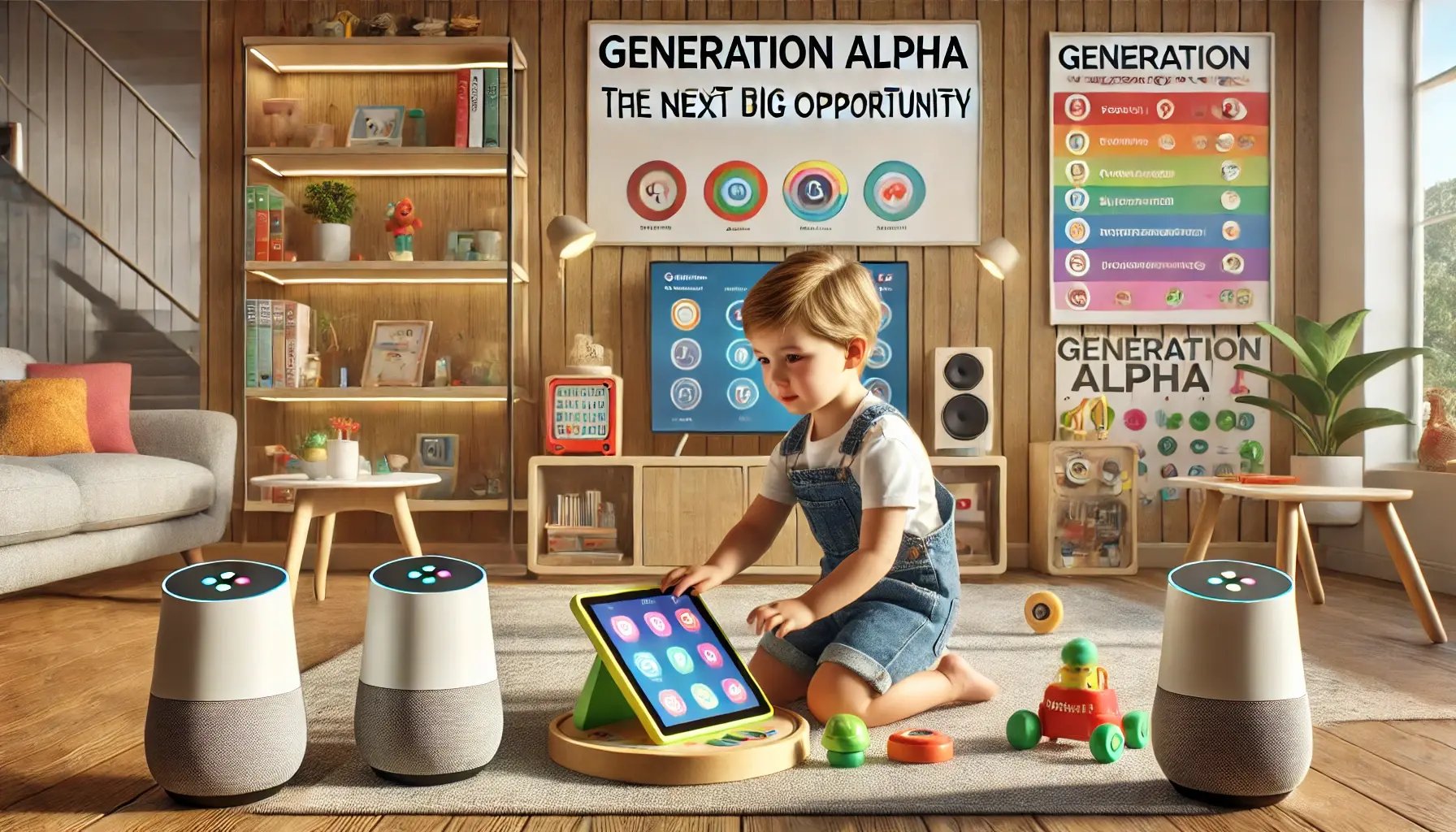Marketing Psychographics for different Generations
As a marketer, you know the importance of segmenting your audience. While demographics like age, gender, education, and income are crucial for understanding the “who” of your target audience, they often miss out on the “what,” “how,” and “why” of their behaviours. This is where marketing psychographics come into play, offering more valuable insights into the interests, activities, and opinions of your segmented audience.
One effective way to gain this psychographic insight is by focusing on different generations. Your target audience likely spans these five key generations: Baby Boomers, Generation X, Millennials, Generation Z, and Generation Alpha. Marketing to these groups varies significantly, and targeting each specifically can dramatically improve your marketing results. Let’s take a closer look at these different generations and explore future trends.

Baby Boomers: Adaptability in an Ever-Changing World
Born: 1946-1964
Baby Boomers remain a powerful generational group, heavily influencing the economy with their spending power and shaping marketing strategies for decades. Despite being introduced to the internet as adults, Boomers have adapted remarkably well to digital change. They are active online, especially on platforms like Facebook, and are significant consumers of TV and email content.
Marketing to Baby Boomers:
Focus on:
- Television: Boomers are still avid TV viewers, making it an effective channel for reaching this group.
- Search Engines and Social Media: Boomers are increasingly tech-savvy, actively searching online and engaging on platforms like Facebook.
- Emails: A well-segmented email strategy targeting specific interests can be highly effective for Baby Boomers.
Future Trends: Boomers are becoming more accustomed to online shopping and digital communication. Expect a growing interest in convenience-based services, such as e-commerce, online health consultations, and home delivery apps. To engage them further, consider incorporating video content and digital storytelling that focuses on health, wellness, and leisure.

Generation X: The Adaptable Cynics
Born: 1965-1980
Generation X, often referred to as the “sandwich generation,” balances care for both their aging parents and their children. They are adaptable yet skeptical, having grown up through economic uncertainty and technological evolution. This generation values authenticity and tends to be highly loyal to brands they trust.
Marketing to Generation X:
Focus on:
- Authenticity: Transparent and honest messaging resonates with Gen X.
- Multichannel Approach: Combine traditional methods (like direct mail) with digital tactics (like social media ads).
- Video Content: Use engaging video content on platforms where Gen X is active, especially Facebook and YouTube.
Future Trends: Gen X continues to value authenticity, with a growing preference for brands that demonstrate social responsibility. As they approach retirement, focus on financial planning, travel, and lifestyle content that appeals to their desire for stability and quality of life. Highlight security features and privacy in digital interactions, as these are crucial concerns for this group.

Millennials: The Digital Natives
Born: 1981-1996
Millennials are the first generation to grow up with the internet, making them tech-savvy and highly skeptical of traditional marketing. They prioritize experiences, self-expression, and meaningful connections, both online and offline. As they reach key life milestones, such as home buying and parenting, they continue to be a dominant purchasing force.
Marketing to Millennials:
Focus on:
- Content is King: High-quality, authentic content that tells a story will engage Millennials.
- Influencer Marketing: Leverage influencers, particularly micro-influencers, to build trust and community.
- Interactive and Visual Content: Utilize Instagram, TikTok, and YouTube to reach Millennials through engaging visuals and videos.
Future Trends: Millennials will continue to drive the demand for sustainability, diversity, and inclusivity in branding. Personalization and customization will be key, with a focus on creating unique, one-of-a-kind experiences. Consider gamification, augmented reality (AR), and virtual reality (VR) to create immersive experiences that captivate this generation’s attention.

Generation Z: The Social Media Connoisseurs
Born: 1997-2012
Generation Z has grown up fully immersed in the digital age. They are highly visual, crave authenticity, and are driven by social causes. They communicate primarily through short-form content on platforms like Snapchat, Instagram, and TikTok.
Marketing to Generation Z:
Focus on:
- Short-Form, Visual Content: Use Instagram Reels, TikTok, and Snapchat to deliver concise, visually engaging content.
- Brand Values Matter: Highlight your brand's stance on social and environmental issues.
- Direct-to-Consumer (DTC) Models: Gen Z values direct relationships with brands and often prefers shopping online.
Future Trends: Expect Generation Z to further push the envelope on digital content and engagement. They will demand even more transparency, ethical practices, and inclusivity. To appeal to this group, consider investing in interactive content like AR filters, social media challenges, and purpose-driven marketing campaigns.

Generation Alpha: The Next Big Opportunity
Born: 2013-Present
Generation Alpha, the children of Millennials, are just beginning to make their mark. While still very young, this generation is growing up in a fully connected world, surrounded by AI, voice assistants, and smart devices. They are accustomed to instant access to information and seamless digital experiences.
Marketing to Generation Alpha:
Focus on:
- Visual and Interactive Content: Gamified experiences, interactive apps, and kid-friendly videos are key to engaging this generation.
- Educational and Entertaining Content: Blending learning with fun will appeal to both Generation Alpha and their parents.
- Parents as Gatekeepers: Understand that parents, primarily Millennials, are the decision-makers. Marketing strategies should appeal to both generations, balancing educational value with entertainment.
Future Trends: Generation Alpha will redefine digital interaction. Expect an even greater emphasis on augmented and virtual reality, AI-driven content, and personalized experiences. Brands should prepare for a world where voice search, conversational AI, and instant digital gratification are the norms.

Looking Ahead: Key Trends Across All Generations
-
Increased Digitalization: Across all generations, digitalization will continue to drive marketing strategies. From Baby Boomers adapting to online shopping to Generation Alpha growing up with AI, brands must embrace digital tools to remain relevant.
-
Personalization: Each generation values personalized experiences, but the methods and channels vary. Utilize data analytics and AI to tailor content, offers, and experiences to the specific needs and preferences of each generation.
-
Social Responsibility: Authenticity, transparency, and social responsibility are increasingly important across generations. Brands that fail to demonstrate genuine commitment to these values will struggle to build loyalty.
-
Augmented and Virtual Reality: As technology evolves, AR and VR will play a larger role in marketing, especially for Millennials, Gen Z, and Generation Alpha. Consider creating immersive experiences that engage and entertain your audience.
Conclusion: Embracing Generational Marketing Strategies
Understanding generational psychographics is essential for effective audience segmentation and successful marketing strategies. As new generations emerge and existing ones evolve, marketers must stay ahead of the trends to engage their audiences effectively. Start by identifying which generation you want to focus on and tailor your strategies accordingly to maximize engagement, conversions, and loyalty.
From the blog


